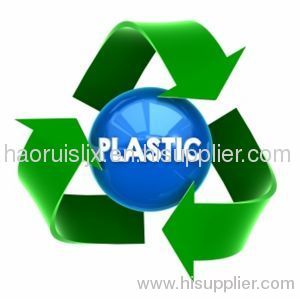
|
Baoding Haorui Machinery Manufacturing Co., Ltd.
|
Durable friction washing line for PET recycling
| Payment Terms: | T/T,L/C,WU, |
| Place of Origin: | Hebei, China (Mainland) |
|
|
|
| Add to My Favorites | |
| HiSupplier Escrow |
Product Detail
separating the bottles from the other types of plastic. washing and grinding,shredding,cooling and drying,the final products
1 purchase and transport: the recycling company buying and collecting used PET bottles from the individual collectors and local depots which are packing them into pressed cubes.
2 separating the bottles from the other types of plastic: after the scrap plastic arrival to the factory, in the first part of the recycling drive is sorting the bottles according to their color and composition and removing the labels. The caps and cap rings (those made of polypropylene) are separated and also recycled.
3 washing and grinding: the bottles are being washed in order to remove the remaining surface contamination and other incompatible polymer that are later found floating in on the surface of the water during the process commonly called "process of swimming and sinking" PET is heavier than water, so it will sink, the remaining materials will float, which makes it easy to collect them and put them aside, during the PET washing phase, the caps and labels made of PP or HDPE will also float and enable us easy removal.
4 shredding: after washing, the bottles are being shredded and shaped into PET flakes , the flakes are then dried and stored in a silo, to be directed into compactor and extruder. The products receive is a recycled spaghetti shaped materials.
5 cooling and drying: after cooling and drying, the regranulate is packed into jumbo bags, ready to be used for the production of new PET products.
6 the final products: clean PET often called the recycled PET or abbreviated rPET, is sold to the manufacturer and used for production of plastic products such as: fibre, mattresses, pillows, sleeping bags, carpets or fillings for jackets and covers. The thin plastic has good isolation features and is also used for roof isolation. In 2012., more rPET will be used for the production of PET beverage containers. This system is known as "Bottle to bottle recycling".
Identifies the type of plastic e.g. PET and HDPE PETE e.g. Plastic Fizzy Drinks Bottles. The bottles you recycle could end up as carpet backing, sleeping bag insulation, containers, tool handles and even clothing such as Fleeces. HDPE e.g. plastic milk bottles. The bottles you recycle could end up as plastic bins, traffic cones, plastic containers etc. |
Please dispose of glass bottles and jars in a bottle bank or use your glass kerbside collection. Glass can be recycled to make new glass bottles, aggregate for roads and concrete can be made using glass as an ingredient. The energy we save when we recycle one glass bottle is enough to light a light bulb for four hours. |
Didn't find what you're looking for?
Post Buying Lead or contact
HiSupplier Customer Service Center
for help!
Related Search
Pet Recycling Line
PET Bottle Recycling Line
Pet Bottle Washing Line
Pet Washing Line
Pet Flakes Washing Line
Recycling Line
More>>

















